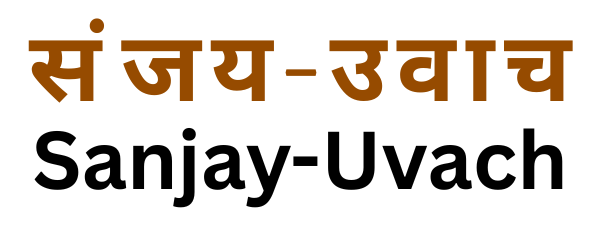He sailed for South Africa in 1893, on a work contract, at an age of twenty-three. Returned, as an Indian activist, at forty-four, to a rousing welcome at Bombay Port in January, 1915. A kind of honour that even the better-invested, home-grown independence-activists were kept from.
Though from a country also ruled by the whites, quite a few things rattled him in South Africa. Widespread racial discrimination. Being asked to sit on the floor in a rail coach and, on refusal, getting beaten up. Getting jettisoned from a first-class coach which he was eventually allowed to travel in after a night-long protest at the railway station. Not being allowed to wear a turban by a European magistrate in the Durban court. Denial of entry into a whites-only hotel. Smarting under these insults to his person, the thoughts of asserting himself at a bigger level must have shaped up within him instantly to find more serious expressions later. Could these experiences possibly earn someone rich credentials, entitling him to be feted the way he was on return ? Any black, brown or yellow person living in a colonial regime would have found himself in a similar predicament, living these very experiences day in and day out.
What was it, then.
Postponing his scheduled return to India in 1894, he assisted the Indian community in opposing a bill denying them the right to vote. Though the bill was eventually passed, he got noticed as an activist. That very year he formed the Natal Indian Congress which attempted to bring (though not to the desired outcomes) the Indian community on a political platform. Later, in 1900, he formed a motley group of stretcher-bearers to bring the wounded British soldiers to hospitals during the Boer War which earned him appreciation as a good activist who held no grudges. Around 1903 he brought out a multi-lingual journal named “Indian Opinion” which carried articles predominantly on social issues and advocated the Indian cause. A new Act was promulgated in 1906 requiring registration of all Indians with the authorities. He mobilized the community and urged them to defy the Act, even if it led to retribution. The defiance was non-violent in nature and became a precursor to his larger idea of Satyagrah. Shifting his focus (which seldom extended beyond the Indians and, at times, other South Asians), it was as late as 1910 when he started speaking about discrimination against native Africans also. In 1910, he set up an ashram named Tolstoy Farm (named after the Russian writer and philosopher) to further his idea of Satyagrah.
This pretty much sums up his work in South Africa. At least, the physicality thereof. Was this enough to create a big opening for him in the political space in India leading to his grand lateral entry in the independence movement ?
Impressed by his “great community organizer” and “nationalist” credentials, Gopal Krishna Gokhale, reportedly his mentor, requested him to return to India. There was another, less-sublime reason; he was in London the previous year for treatment of pleurisy and needed to return to India to escape the English winter. Welcomed first at the Bombay Port on arrival, a few days later he was feted at a big reception in the palatial house of Jehangir Petit (a Bombay businessman) which was attended mostly by Indian businessmen and Europeans. The number of Indian independence-activists present at the reception left a lot to be desired. The British too honoured him by awarding a gold medal (Kaiser-I-Hind) via the King’s birthday honours list of 1915.
He started off as an average person and held an averagely strong belief that one needs to assert oneself against injustice. He did have the credentials in support of his belief but all in a foreign land. There was nothing to showcase his work in India. His understanding of the political eco-system of pre-independence India too was limited as he had spent a large part of his prime away from the action in the country. The masses didn’t know enough about him or his work. Whatever people knew about him was peripheral, that too through the grapevine created by the people who knew him from prior. What was it, then ? Was he just another intelligent Indian who, short of serious prospects in the politics overseas, saw an opportunity in India ? It is also insinuated that some educated elitists in the Indian National Congress (the Congress) needed a fresh face (which they found in him) to counter the competitors’ campaign for independence which was fast gaining traction.
He left South Africa in 1914 for good. Why ? Was it a typical instance of having seen it all and done it all ? Reason, therefore, to move to bigger theatre with bigger audience. Or was he disenchanted with the lukewarm response to his initiatives in South Africa which put paid to his expectations to turn his work into a mass movement ? Reason, therefore, to move to more receptive environs.
Let’s take stock.
He was not doing well in his legal profession in India and found himself in South Africa on a work contract. The racial discrimination was not as aggressive in India as it was in South Africa where it had sanction of the law. Quite a few race-driven practices in South Africa stirred his emotions. He resisted, first at a personal level. Later, he tried to structure the resistance at a community level. He did achieve small successes. His efforts did result in deeper acknowledgment of racial discrimination as an issue of serious concern but couldn’t provide enduring solutions. He could not create a mass movement. The bigger success that eluded him may have caused some disappointment. Having whiffed success, albeit small, in South Africa, he probably wanted a bigger space. Would it, therefore, be appropriate to deduce that one of the main reasons for his return to India was personal in nature. As it eventually panned out, he was at the right place at the right time in India.
Was it the internal politics of the Congress that prompted his return and accorded him a recognition disproportionate to his credentials at that point in time ? There were two groups within the Congress, carrying different approaches and ideologies to achieve self-rule. One group led by Gopal Krishna Gokhale, called Naram Dal (the moderates), aimed to achieve self-governance within the framework of the British Empire through peaceful and constitutional means. The other, called Garam Dal (the belligerents, for want of a better word), led by Lal-Bal-Pal (Bal Gangadhar Tilak, Bipin Chandra Pal, and Lala Lajpat Rai), was less willing to compromise with the British and emphasized on mobilizing mass support, rekindling pride in the India’s heritage and focus on the national unity. The belligerent group had better outreach to the urban middle & lower classes and they also used religious symbols to inspire the masses but avoiding religion & politics overlap. The ideological divide eventually led to split of the Congress in 1907. It is believed that these developments disheartened the moderates and they started scouting around for newer ways and newer faces to counter the rival campaign. This is around the time Gopal Krishna Gokhale visited him in South Africa in 1912 to prepare the background for his return in 1915.
One may question as to what is the point in discussing the issue now, after over a century. Well, there are instances galore in India of having people and events described in the official history to suit viewpoints. It’s time to put them in the correct perspective. We need to get a firm sense if his return to India was for the reasons of love for the country or the internal politics of the Congress or self-aggrandizement. This discussion notwithstanding, the nation is thankful to him for his contributions towards independence of India.

